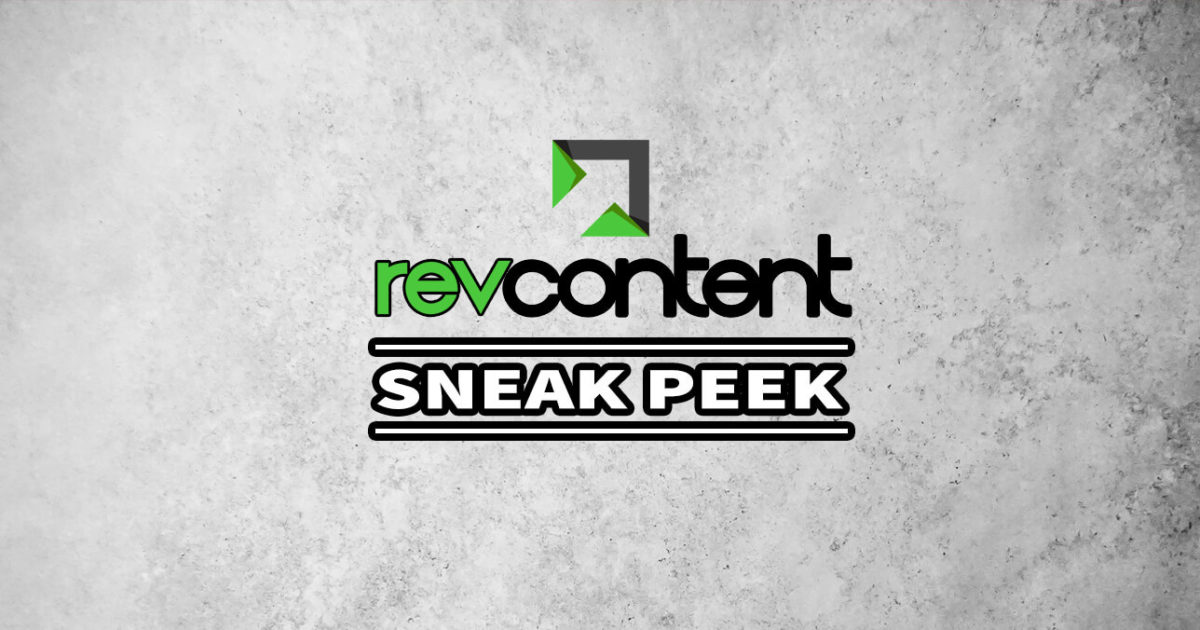 Have you been seeing moderate success with your Revcontent ads, but want an even bigger return? These five simple tips will instantly improve your Revcontent ad performance.
Have you been seeing moderate success with your Revcontent ads, but want an even bigger return? These five simple tips will instantly improve your Revcontent ad performance.
Improve Your Revcontent Ads Today With These 5 Simple Tips
Revcontent ads offer publishers the opportunity to monetize your content. For advertisers, they provide an opportunity to drive traffic to your own content.
If you’ve been using Revcontent to drive traffic, you’ll know that creating the perfect ad takes some practice. To improve the performance of your Revcontent ads, these five steps will help you hone in on your target audience and get them excited about your content.
1. Make your CTA more specific
Crafting the perfect call to action (CTA) is a lot easier said than done. Your CTA should encourage readers of your content to take the next step—whether it’s signing up for a newsletter or starting a month-long trial. Hopefully, your content has already shown them why this next step will benefit them. Many advertisers make the mistake of including a generalized CTA in the hopes that this will attract a wider range of readers who may be interested in the business for a variety of reasons. However, studies have shown that personalized CTAs can convert up to 42% more customers than a more general CTA.
Review your current CTAs: How can you make them more specific? How can you direct readers to a more specific next step? For instance, instead of using, “Check out our latest services,” try “Take a look at our new brand-launching service.”
2. Focus on split testing
In native advertising, split testing is an essential step that will help you refine the elements of your campaign to determine the most effective combination. Be sure to test the individual elements of your ad to find out what’s working and what can be improved or changed. Elements to test on their own include the headline, the image, the CTA, and the landing page itself.
Instead of scrapping an ad that isn’t performing well, try tinkering with one or two elements of the ad—split test to find out which elements are letting you down. Revcontent makes split testing easy, so be sure to make use of this tool to optimize your ads.
3. Block low-CTR widgets
Blocking widgets with no conversions or no sessions is one of the easiest ways you can optimize your Revcontent ads. Once you’ve “cut the fat,” so to speak, by blocking widgets with no conversions or sessions, turn your attention to your widgets that have the lowest CTRs (click-through rates).
In our guide to Revcontent best practices, we recommend blocking low-CTR widgets after three to seven days. This gives you enough time to test out the widget and give it a chance to gain popularity. After about a week, it should be clear that a widget with a low CTR isn’t going to work for your campaign. Revcontent makes blocking widgets straightforward and intuitive.
4. Optimize your headlines
Optimizing your ad headlines is one of the most essential steps in creating a successful Revcontent ad. According to CopyBlogger, while eight out of ten people will read a headline, only two will continue to read the rest of the content. It’s easy to see why the headline is so important—in many cases, it’s your only chance to get people interested.
A widget’s headline plays a significant role in grabbing the reader’s attention and piquing their interest. If you think your headline is a little bland and non-specific, try implementing some of our headline best practices, like using questions or including pop culture references.
In your Boost headline titles, try using dynamic text token descriptions like [CITY], [STATE], or [COUNTRY] to make your headlines more specific.
5. Modify “sales language” in your content
A Revcontent ad can do much more than a regular ad—it can actively engage a reader by providing content that is genuinely interesting and useful. Many marketers make the mistake of creating widgets that look a little too similar to a banner ad.
Many of us in the marketing business are trained to think that “salesy” language converts. However, in the world of native advertising, it can actually negatively impact your ad’s performance. As CrazyEgg notes, when it comes to content, sales language isn’t what will sell your product—rather, it’s the reader’s emotional connection that will grab and hold their attention and encourage a soft sell. When creating your content, focus first and foremost on what your content can give rather than what you can get out of your readers.
The takeaway
Getting your Revcontent ads “right” can take a little time. If your ads aren’t performing as well as you’d hoped, try making a few of these tweaks to your ad creation and testing strategy and you should begin to see more engagement and traffic than ever.
Still need help optimizing your Revcontent ads? Here at Brax, we’re dedicated to helping businesses master Revcontent to make the most of their campaigns. Find out more about what Brax can do for you today.

